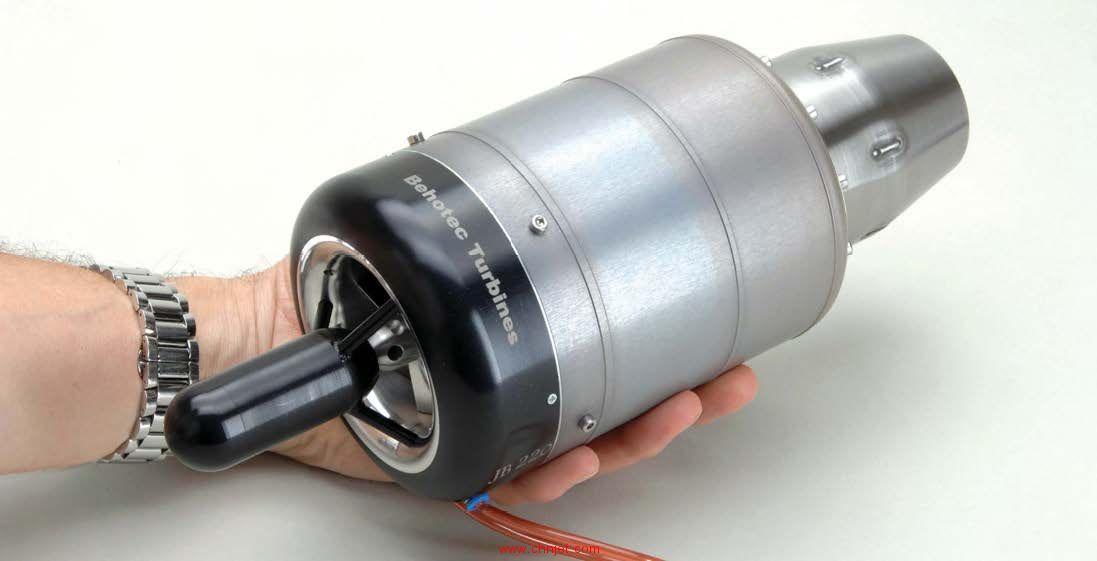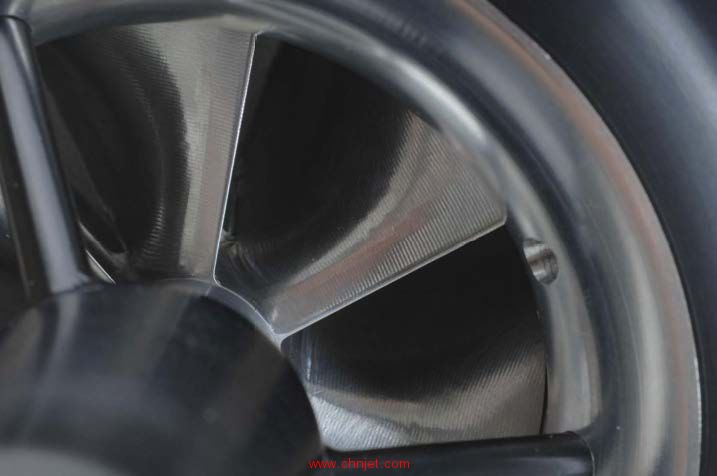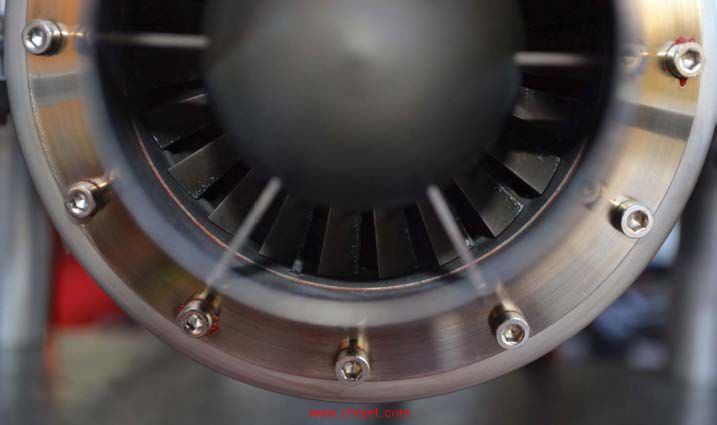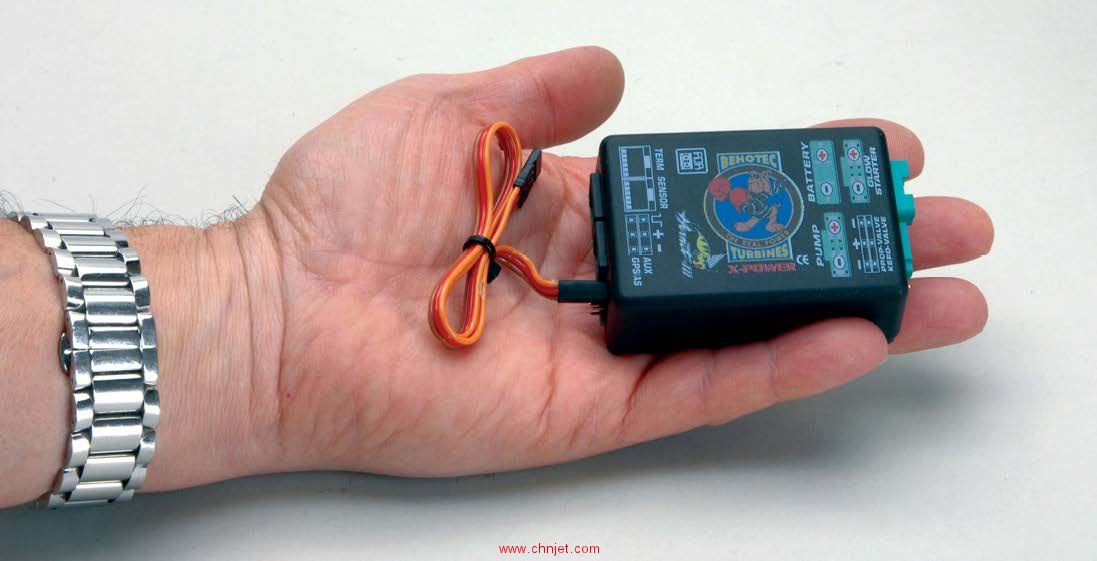|
 The compact turbine just oozes quality and solidity, but is no heavier than the competition
The compact turbine just oozes quality and solidity, but is no heavier than the competition
In the Box
The turbine package is quite comprehensive, and contains everything required to operate the engine apart from the ECU battery, so includes the turbine itself, fuel pump, ProJet ECU and matching GSU, I/O board, fuel and kerostart valves along with fuel tubing, leads, filter etc. Looking first at the turbine, this is a very nice piece of work, with the first impression being that the entire engine is of very sturdy and solid construction, ranging from the machined aluminium starter bullet through the particularly stiff main case, complete with machined retaining rings for the mounting clamps, and on to the long and very neatly produced tailcone.
The starter bullet, support struts and front cover are all anodised black whilst the main case is also anodised, but this time in an anthracite colour, with the tailcone section having a bright finish. The temperature sensor and kerostart plug are internally mounted resulting in a smooth and uncluttered outward appearance, whilst there are a total of four connections, these being for the fuel and kerostart lines, as well as the main power and data cables from the ECU.
The machining work in the engine is very nice, and the compressor and intake are particularly well manufactured, as can be seen in one of the photos. Although buried a long way forward of the rear of the tailpipe the turbine wheel also looks very neatly produced. Notably the manual specifies that the turbine should be serviced after 50 hours of use, which is double the more normal 25 hours suggested by certain other turbine manufacturers, thus enabling less downtime for a frequently flown model.
The ECU itself is the latest Hornet III from ProJet, and although not the smallest ECU around, certainly continues the rugged theme, as it is well protected within a neat, moulded casing, this having Behotec branding.
The fuel pump is quite conventional and utilises a brushed motor, but does incorporate a useful mounting flange, which will make installation very simple compared to the many fuel pumps which leave mounting to the user’s imagination.
Other items supplied are fairly standard, as might be expected, however unlike most turbines, two separate English language instruction manuals are supplied, one covering the engine and the second the ECU. No FOD guard is supplied; however one is available as an option from Behotec.
As mentioned no battery is included, the instructions recommend a 3S LiPo of at least 2500 mAh and this is what we used for the testing, it proved to provide plenty of power for multiple starts and did not require recharging during the testing process.
 This nice close-up shot shows the quality of the machining of the compressor
This nice close-up shot shows the quality of the machining of the compressor
 With the long tailpipe it was a challenge to get this sharp photo of the turbine wheel
With the long tailpipe it was a challenge to get this sharp photo of the turbine wheel
 Not the smallest ECU on the market,but probably the most well protected within its tough, moulded case
Not the smallest ECU on the market,but probably the most well protected within its tough, moulded case |
![]()
![]()